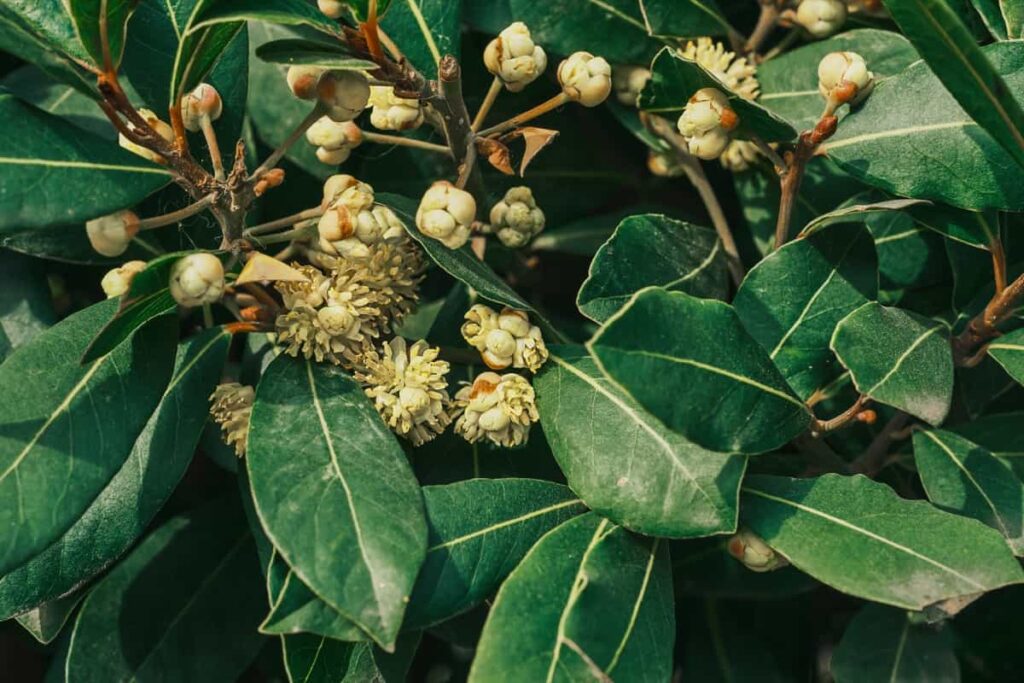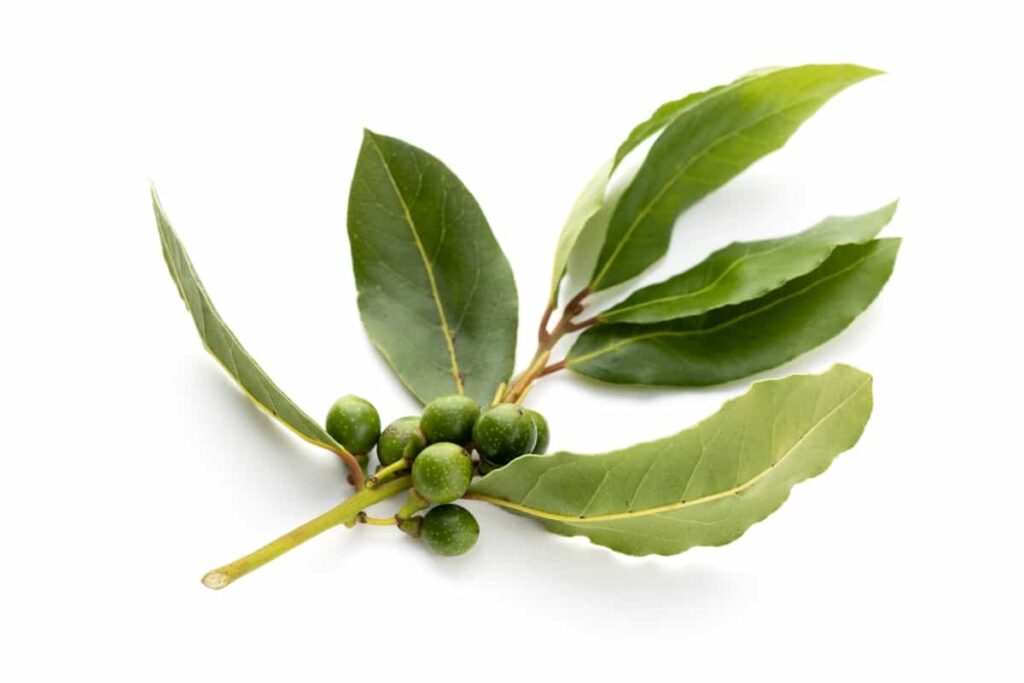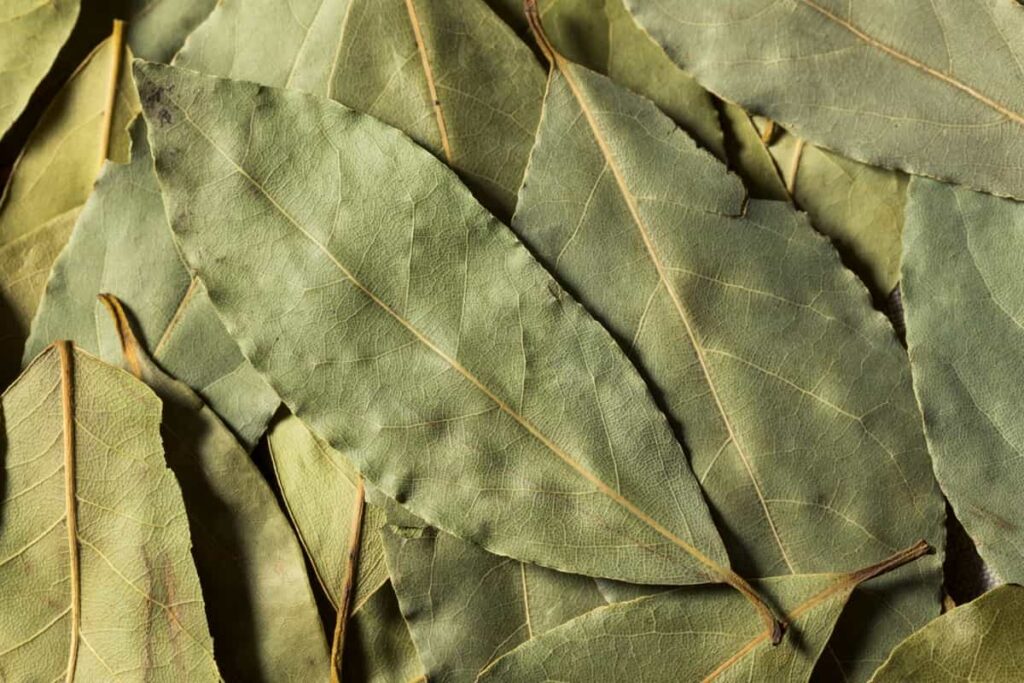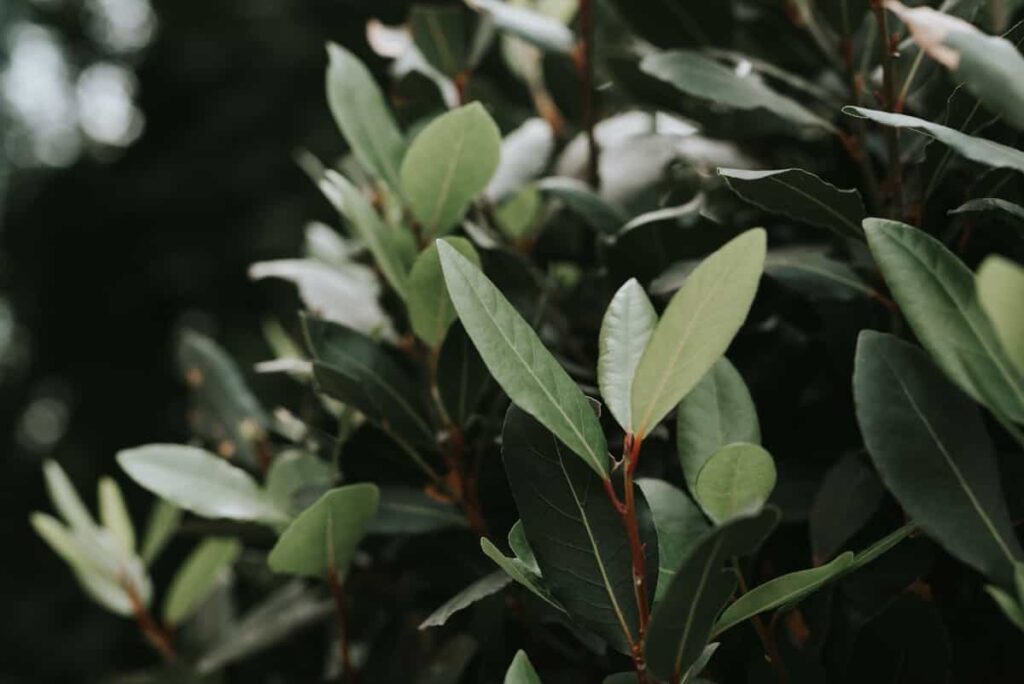Tej Patta is also called as Indian Bay Leaf. Botanically, Tej Patta is recognized as Cinnamomum Tamala, belongs to the Lauraceae family, and is a relative of cinnamon. Not only does it add beauty and fragrance to your outdoor space, but it also serves as a versatile herb that can be used in various culinary dishes. Planting Tej Patta is a simple and satisfying process that will reward you with an abundant supply of aromatic bay leaves.

How to Grow Tej Patta at Home
Selecting the Right Location
This aromatic herb thrives best in warm climates, so it’s important to choose a spot that offers ample sunlight throughout the day. Ideally, find a sunny area in your garden or balcony where the Tej Patta plant can receive at least six hours of direct sunlight. This will ensure optimal growth and abundant foliage. Tej Patta plants prefer well-drained soil that is rich in organic matter.
Obtaining Tej Patta Plant
One option is to purchase a young Tej Patta plant from a nursery or garden center. Look for healthy plants with vibrant green leaves. Make sure the plant is disease-free and free of pests. Another option is to propagate your Tej Patta plants from cuttings. To do this, select a healthy branch from an existing bay leaf plant and take a cutting that’s around 4-6 inches long.
Remove the lower leaves and dip the cut end in hormone powder before placing it in potting soil or vermiculite mixture. If you have access to someone who already has a mature Tej Patta tree, you may be able to get some fresh seeds directly from them. These seeds can then be planted in pots or directly into the ground.
Preparing the Soil
Clear the area where you plan to plant your Tej Patta. Remove any weeds or debris from the soil surface. This will create a clean and suitable environment for your plant to thrive. Next, loosen up the soil by using a tiller or garden fork. Once the soil is loosened, mix in organic matter like compost or well-rotted manure.
In case you missed it: Agricultural Applications of Azolla: Exploring Azolla Miracles in Farming

Spread a layer of about 2-3 inches evenly over the planting area and gently work it into the topsoil. After incorporating organic matter, ensure that the soil is moist before planting or cutting your Tej Patta seedlings. Make sure that you have tested the pH levels of your soil beforehand, as bay leaf plants prefer slightly acidic to neutral soils with a pH range between 6 and 7.
Planting Tej Patta
To get started, choose a location in your garden or patio that receives full to partial sunlight. Tej Patta plants thrive in well-draining soil, so make sure the area has good drainage. To obtain a Tej Patta plant, you can either purchase one from a nursery or propagate it from seeds or cuttings. If you’re starting from seeds, soak them overnight before planting to improve germination rates.
For cuttings, select healthy stems and remove the lower leaves before placing them in water until roots develop. Prepare the soil by loosening it by using a garden fork and removing any weeds or debris. When planting Tej Patta, dig a hole slightly larger than the root ball of your plant. Place the Tej Patta plant into the hole and fill it with soil around the stem base.
Watering
Proper watering ensures healthy growth and vibrant leaves. However, it’s important to strike the right balance as overwatering the Tej Patta plant can lead to root rot, while underwatering can cause wilting. When it comes to watering your Tej Patta plant, consistency is key. Aim to keep the soil moist but not saturated. Check the moisture level by inserting the finger into the soil. if you feel the soil is dry water it. During the hot summer season or in dry climates, you may need to water more frequently. On the other hand, reduce watering during cooler seasons or if you notice that the soil retains moisture for longer periods.
Fertilizing
It helps provide the necessary nutrients that the plant needs to grow and thrive. When it comes to fertilizing, choosing the right type of fertilizer is crucial. Organic option like compost is the best choice for feeding your Tej Patta plant. These natural fertilizers not only nourish the soil but also improve its structure and fertility over time.
When applying fertilizer to your Tej Patta plant, be sure to follow the instructions on the packaging carefully. Over-fertilization can lead to burns on the leaves and roots, causing harm to your plant. It’s best to apply fertilizer during the growing season, which falls between spring and summer.
Pruning
It helps to maintain the plant’s shape and size, promotes healthy growth, and ensures optimum production of leaves. Regular pruning also helps in preventing diseases and keeps pests at bay. When it comes to pruning your Tej Patta plant, start by removing any damaged branches. This will improve the overall appearance of the plant and prevent any potential spread of diseases. Additionally, remove any branches that are crossing against each other, as they can cause damage.
In case you missed it: How to Increase Banana Yield: Exploring Boosting Techniques for Fruit Size, Quality, and Yield

To promote bushier growth, you can also selectively prune certain branches to encourage new shoots to emerge. Make sure to cut just above a leaf node or bud to stimulate new growth from that point. However, avoid excessive pruning as it can stress the plant and affect its productivity. Remember always to use clean and sharp tools when pruning your Tej Patta plant.
Pest and Disease Control
Tej Patta are susceptible to various pests and diseases that can hinder their overall health. One common pest that affects Tej Patta plants is aphids. To control aphids, you can spray water and dish soap mixture onto the affected leaves or introduce natural predators like ladybugs into your garden. Another pesky intruder is spider mites. Regularly inspecting your Tej Patta plant for signs of spider mites will help catch infestations early on.
If detected, you can wash off these pests with a strong jet of water or use insecticidal soap. Fungal diseases can also affect Tej Patta plants. This white powdery element appears on the leaves and stems, inhibiting photosynthesis and stunting growth. To prevent this disease, ensure proper air circulation around your plants by spacing them adequately apart. Additionally, avoid overhead irrigation to minimize moisture buildup on foliage.
Harvesting Tej Patta
To harvest Tej Patta, pluck individual mature leaves from the plant as needed. It is best to pick the leaves in small quantities rather than stripping the entire plant at once. This will allow new growth to continue and ensure a steady supply of flavorful leaves throughout the year. When harvesting, choose mature leaves that have developed their characteristic deep green color. These are usually found in the outer branches of the plant.
Gently hold a leaf close to its base and give it a quick twist or snip with clean garden shears. Remember not to overharvest your bay leaf plant, as this can weaken its overall health and productivity. By practicing responsible harvesting techniques, you can enjoy an abundant supply of fragrant Tej Patta all year round.
Frequently Asked Questions (FAQ) Growing Tej Patta at Home
What is The Best Time to Plant Tej Patta at Home?
The ideal time to plant Tej Patta is during the spring season when temperatures are moderate and there is ample sunlight. This will provide the plant with optimal conditions for growth.
In case you missed it: Chilli Pepper Cultivation Cost Per Acre in India: Exploring State-wise Average Production Cost

Are There Any Pests or Diseases That Affect Tej Patta Plants?
Bay Leaves are generally resistant to pests and diseases; however, occasional infestations by aphids or spider mites, which can be controlled with natural insecticides or soapy water sprays, might occur.
Can I Grow Tej Patta in Pots or Containers?
Absolutely. Bay Leaf plants can be successfully grown in pots or containers as long as they have good drainage holes at the bottom and are filled with well-draining potting mix.
Conclusion
By growing your Tej Patta, you can enhance the flavor of your dishes and savor their unique fragrance. Growing Tej Patta at home promotes sustainability by reducing our reliance on commercially grown herbs. Moreover, nurturing a bay leaf plant in your garden creates a connection with nature and encourages biodiversity.
- Management Pests and Diseases in Your Cotton Field
- Sheep Farming Business Plan for Beginners
- Aquaponic Farming at Home: A Step-By-Step Guide
- Profitable Village Farming Business Ideas in 2024
- High-Yield Aquaculture: Fast-Growing Fish for Farming
- Effective Fish Pond Construction Techniques for Beginners
- Irrigation and Water Management in Pineapple Farming
- Blossom to Harvest: Mastering Flowering and Pollination in Papaya Farming
- Pig Fattening Essentials: From Selection to Sale for Beginners
